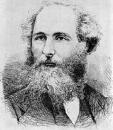| |

Home
Contact Info
Course Info
Calendar
Homework
Lecture Notes
|
|
|
|
PHY 218: Electricity and Magnetism II
Prof. S. Teitel stte@pas.rochester.edu ---- Spring 2015
Problem Set 8
Due Wednesday, April 29, by 5pm in the homework locker
- Problem 1 [15 points]
Using the expressions found in lecture for the electric and magnetic fields of a charge moving with a small uniform velocity v (v << c), compute the total momentum PEM carried by the electromagnetic fields of the charge. Recall, PEM = ∫d3r pEM, where the electromagnetic momentum density is pEM = ε0μ0S = ε0E×B.
Show that to lowest order in v, PEM = (4/3) (U/c2)v, where U is the total electromagnetic energy stored in the fields of the charge.
- Problem 1 [15 points]
Consider making a Lorentz transformation L1 from inertial reference frame K to the inertial reference frame K', where K' moves with velocity v1 in the x direction with respect to K. Then make a second Lorentz transformation L2 from frame K' to frame K", where K" moves with velocity v2 in the x direction with respect to K'. Find the velocity v3 with which K" is moving with respect to the initial frame K. This gives the relativisitic law of addition of velocities!
To find the answer, use the result that the matrix of the combined transformation L3 = L2L1 from K to K" is given by the product of the matrices for the transformations L2 and L1, i.e.
aμν(L3) = ∑σ aμσ(L2)aσν(L1)
Compute the above matrix and identify the velocity v3 by comparing it to the known form for a Lorentz transformation with velocity v3 in the x direction.
- Problem 2 [15 points]
Consider a point charge q at rest at the origin in an inertial frame K'. We know the electric and magnetic fields E'(r', t') and B'(r', t') of the charge in this frame K'. The frame K' is moving with velocity v in the x direction, as seen by an observor in the inertial frame K. Using the Lorentz transformation find the electric and magnetic fields of the charge as seen by the observor in frame K.
Show that the fields you get above are the same as we found from the Lienard-Wiechert potentials as applied to the case of a charge moving with constant velocity v. Remember, you have to transform both the fields and the coordinates, i.e. your result should give E(r,t) and B(r,t).
|
|